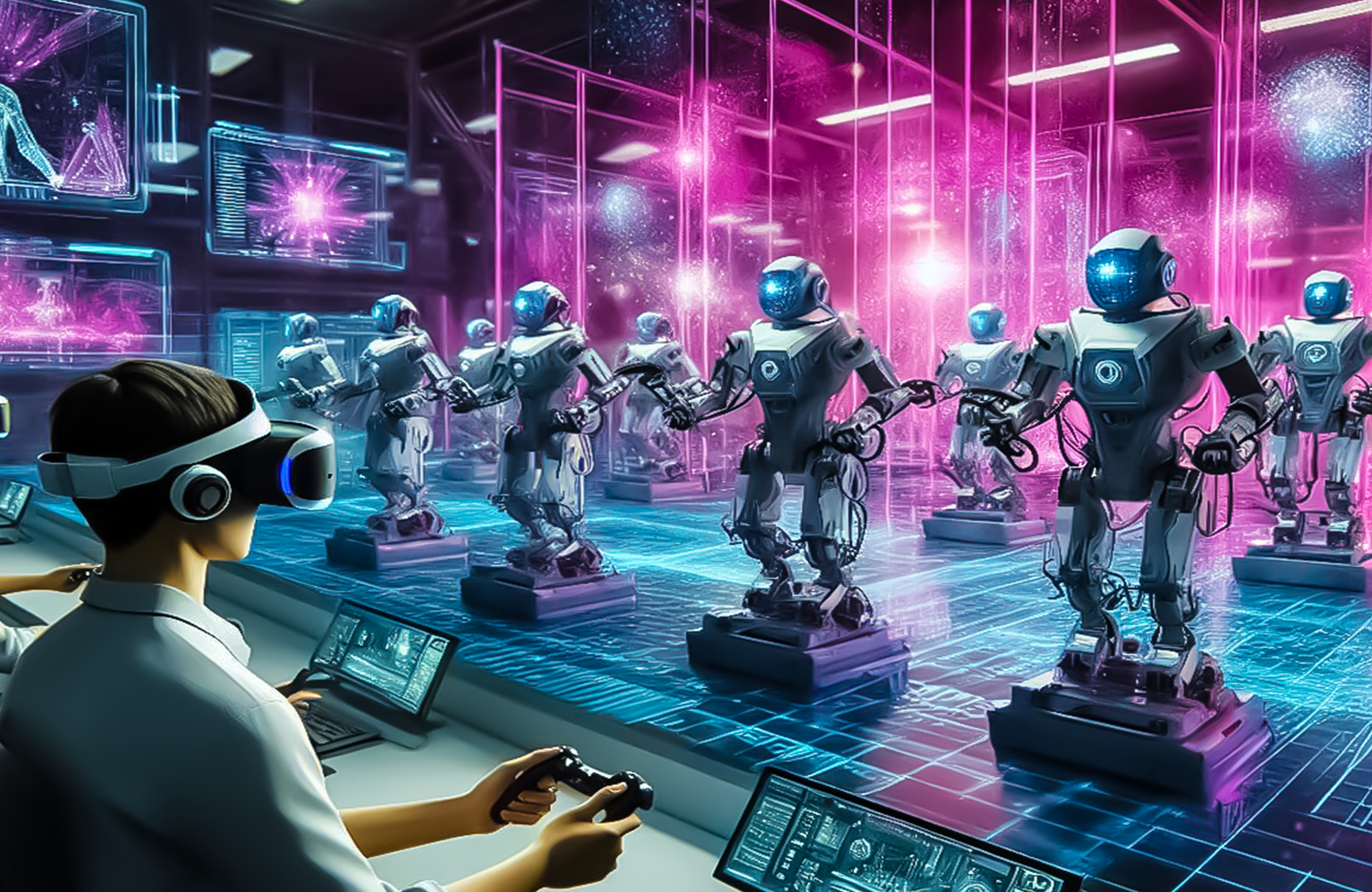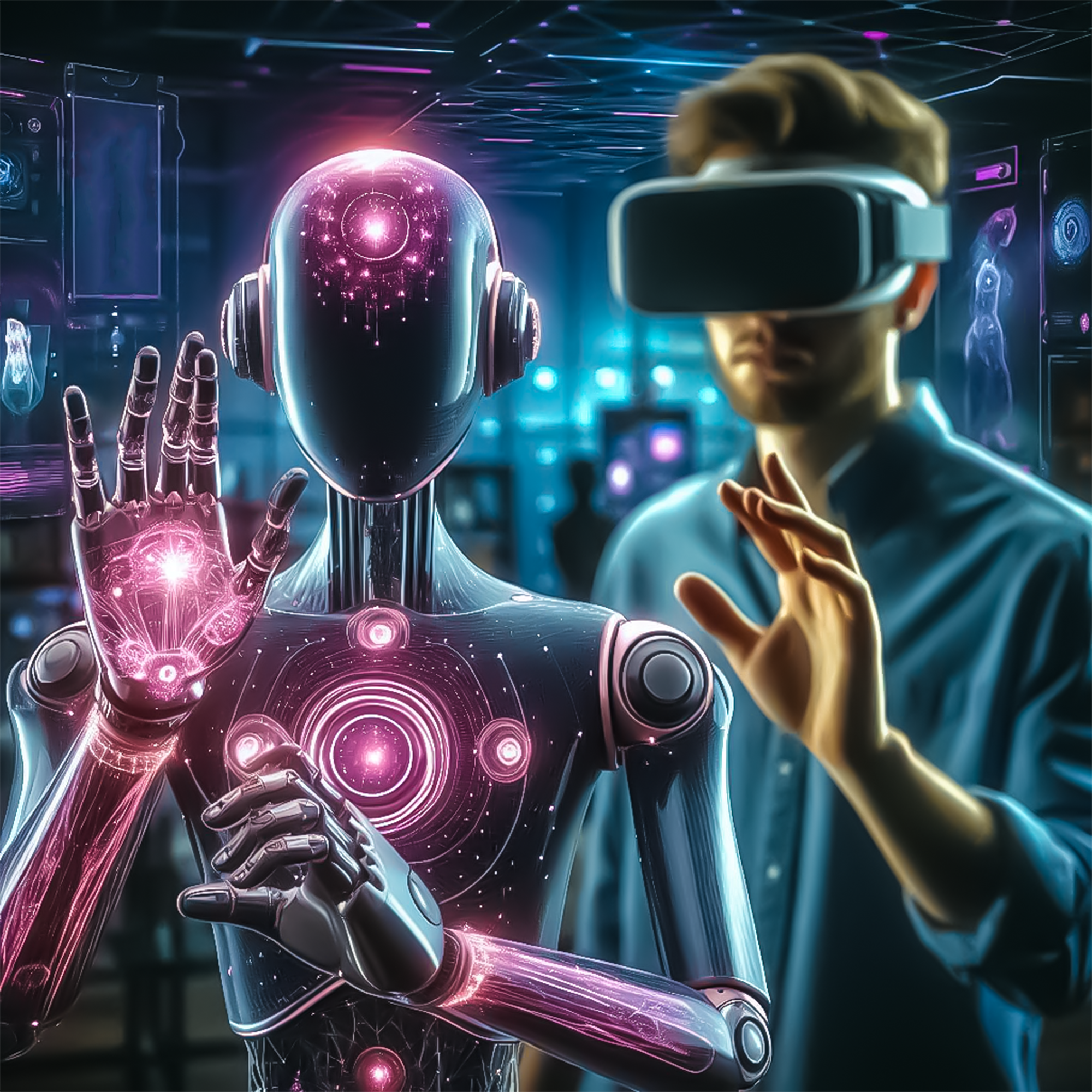Teaching Robots with VR: The Future of Command and Control
Learn how virtual reality is changing the face of teaching and commanding robots.
Imagine being in a position where you will simply teach a curriculum to a robot by showing it in a virtual environment; that possibility is fast becoming a reality through virtual reality applied to robotics training and command. Let’s explore how VR is transforming the way we teach robots, making the process more intuitive and effective.
The Power of Virtual Reality in Robotics
1. Immersive Demonstration
Trainers can be immersed in a virtual environment using VR and demonstrate a task to robots in real-time. This hands-on method would make teaching extremely accurate, and even the most complex motions could be taught to robots easily.
2. Higher Accuracy and Better Control
It provides high accuracy and control, in which trainers can manipulate the virtual environment and objects with appropriate precision; this is very essential while teaching robots tasks that require highly fine motor skills and detailed movements.
Practical Applications
1. Industrial Robotics
It can enable robots to learn complex tasks in manufacturing and assembly lines—such as assembling delicate components or performing precise operations. It reduces the extent of programming to be done and increases the speed of training.
2. Healthcare and Surgery
This rating of VR within the medical field enables surgeons to train quite complex procedures on robotic surgical assistants. This method makes the robotic system more reliable and accurate in performing delicate surgeries for better patient outcomes.
Advantages of VR-Based Training
1. Intuitive Learning Process
The VR-based training is much more intuitive compared to traditional methods of programming. Trainers will be able to teach tasks based on natural and human-like demonstration, which the robots easily understand to imitate actions.
2. Reduced Training Time
This method generally brings about a drop in the time taken to bring new tasks to the teaching of robots. Trainers would do this quickly, and changes are made within real-time, facilitating the deployment of robotic systems more efficiently.

Challenges and Future Prospects
1. Integration with Technology
The integration of the VR system with robotic platforms requires seamless communication and synchronization between the virtual environment and the physical environment. This would further be enhanced by the continuous development in the field of VR and robotics.
2. Scalability and Accessible
Scaling up the VR-based training to reach more industries and making it accessible is the challenge. The entire procedure of VR-based training for robotic assembly operations depends on the development of cost-effective solutions that are user-friendly for wide diffusion.
Conclusion
Commanding robots with VR comes to mark a huge jump in both training and control for robots. Complex tasks can be more effectively trained to robots by using the power of immersion and precision brought in by VR, hence moving toward advanced automation across industries.
Here’s why the future of robot training is heralded with VR!
Using VR to teach robots is a game-changer,
offering unparalleled precision and
interaction.
– Robotics Expert

If you could teach a robot anything using VR, what would it be? 🎮🤖”
Share your thoughts in the comments below!





